2016-10-28 Recently our partner, India Strategic, conducted an interview with the Indian Air Force Chief of Staff, Air Chief Arup Raha.
The Indian Air Force marked its 84th Anniversary this October 8, with the Chief of Air Staff, Air Chief Marshal Arup Raha, saying that IAF is looking forward to increase its combat strength.
He disclosed that the Government is considering the Make in India offers from the US Boeing for F/A 18 Super Hornet, Lockheed Martin for its F-16 (Block 70) and Swedish Saab for Gripen.
IAF is also open to offers for more Rafales as well as Eurofighters but under the Make in India program of the Government. He agreed that IAF needed another manufacturing line besides that of HAL’s Light Combat Aircraft (LCA) to make up for the depleting number of its squadrons.
IAF is happy though at the Rafale deal, he observed pointing out that the aircraft will be equipped with the best of technologies.
He said there had been some delays but upgrade of the Jaguar with new engines and avionics is likely to be finalized soon. The MiG-29 and Mirage 2000 are already on upgrades.
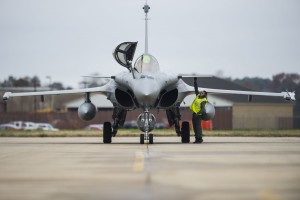
He said that the requirement of midair refuelers is being considered afresh, but gave no details if the competition will be restricted to Airbus whose A300MRTT had been selected earlier or is also open to Boeing, which has meanwhile come up with a new tanker. As for more AWACS, he said, IAF will continue to use IL-76 based platforms. The Brazilian Embraer, which is being fitted with AEW capability by DRDO, will also continue to be used.
A beaming Air Chief Marshal Raha had this to say in an interview with India Strategic:
IS: The key to build and maintain an air power is periodic renewal of inventory. Unfortunately, after the allegations over Bofors acquisition for the Army in 1986, this process was stalled for the Indian armed forces. Baseless allegations erupt even now as and when the Army, Navy or Air Force is on the verge of vital decisions, thereby hurting the three Services.
There seems to be a trend now to acquire direct from a manufacturer under government-to-government (g-to-g) deals, and the RM has also indicated this as a preference. As the Chairman Chiefs of Staff Committee, how do you navigate and coordinate this process for the armed forces?
AR: All procurement schemes in the armed forces are progressed as per the Defence Procurement Procedure, formulated by the Govt. of India. The DPP gets fine-tuned regularly, the latest being DPP-2016, to ensure that the entire’ process’ is ‘outcome’ oriented. The emphasis is on meeting operational requirements and at times it may involve g-to-g route.
Highest priority is being given to equipment that is designed, developed and manufactured indigenously. Equipment which cannot be developed indigenously is being procured from abroad, following the specified procedure.
It has been IAF’s endeavor to procure equipment through multi-vendor bidding as it encourages competition and ensures that the right equipment is procured at optimum cost.
However, there have been cases wherein, due to the proprietary nature of equipment or equipment having a particular niche technology and also to meet certain operational requirements; the Government has chosen the g-to-g route to ensure that critical capabilities are acquired.
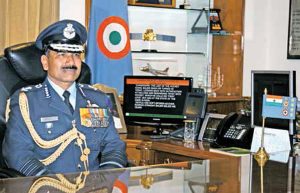
IS: IAF has in fact overcome several challenges in the past few years, particularly in the transport domain with the acquisition of Boeing C-17 and Lockheed Martin C-130J aircraft. Although very capable, their numbers are few. However, and IAF needs to do something about the large number of An-32 aircraft, which are at the end of their lives.
The agreement with Russia for MTA doesn’t seem to be maturing. Your comments please, including on the Tata-Airbus venture for C-295 turboprops?
AR: Deliberations on replacement of An- 32 aircraft are already under progress. There were certain observations on the design of the MTA and the project is under review.
The field evaluation trials of Avro replacement aircraft have been completed. The case is progressing well and the contract negotiations are likely to commence soon. The C-295 MW aircraft is a 5-10 Ton class aircraft. The OEM will supply the initial batch of aircraft and the remaining will be manufactured in India.
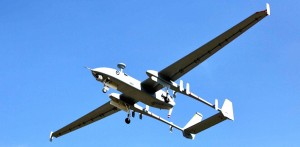
IS: The IL-76 has served us well and so has the An-32 since 1980s. They have gone through upgrades but are still at the end of their lives.We are sure the An-32 which recently crashed in the Bay of Bengal was airworthy, but there are questions in the public mind over the old inventory with the Services generally, and the aircraft particularly.
Transport aircraft are the backbone of the Air Force and as vital for the country as the fighting units are.
Your comments please?
AR: An-32 aircraft has been an extremely reliable aircraft and has been the workhorse of the IAF transport fleet. They have performed exceptionally well in tactical airlift operations. IAF’s An-32 fleet is presently undergoing a mid-life upgrade program.
The upgrade for the first 40 aircraft was undertaken in Ukraine from 2011 onwards. The remaining aircraft are being upgraded in India. The upgraded An-32 aircraft will continue to be exploited by the IAF to their full service life.
IS: Any latest updates on the ill-fated An- 32 aircraft?
AR: A coordinated air-sea search and rescue operation involving assets from IAF, Navy, Coast Guard and Aviation Research Centre was launched on July 22, 2016 for the missing An-32 aircraft. Data from satellites was also utilized for the search operations. Inputs from Indian National Centre for Ocean Information Services were utilized by the Indian Navy to update the search area.
For sub-surface search, IN submarines and survey ship Nirupak were employed. Specialized Deep Sea Research Vessels are also being utilized for seabed profiling. All available commercial vessels, foreign ships and fishing boats have been alerted for visual sightings of any wreckage or debris over the sea for locating the missing aircraft and the survivors.
Approximately 280 sorties/1,275 hrs. have been flown towards airborne search over the sea. Unfortunately, nothing related to the missing An-32 has been found in more than two months of search. However, we continue to be hopeful and the search is continuing with enhanced focus on seabed search.
IS: Fighter jets: The MMRCA completion was scrapped in favor of a direct deal with France, whose Rafale was selected by the Indian Air Force (IAF). The aircraft is expensive, and the number asked for-36- is too small. IAF had planned for 126+63 aircraft for the MMRCA competition in 2007. That requirement should now be touching 300, as more of its existing aircraft are due for phase-out. Could you give an update on the IAF’s fighter fleet?
AR: The Ministry of Defence has prepared a road map for induction of fighter aircraft in the IAF with an aim to build up to the sanctioned strength of 42 fighter squadrons at the earliest. Various options are being considered by MoD. To start with, the deal for procurement of 36 Rafale aircraft has been signed and it will greatly enhance the operational capability of the IAF. We should receive the first aircraft in 36 months time and delivery of all aircraft would be completed in 66 months.
Meanwhile, upgrade programs of Mirage-2000, MiG-29 and Jaguar fleets are progressing well. The LCA has also been inducted and manufacturing of another type of Fighter aircraft under the ‘Make in India’ initiative is also being considered by the Government.
IS: Numbers and Capability both are important. How would you describe capability for IAF aircraft, those operational now and the new ones to be acquired? We have to keep in mind that the new generation of combat aircraft will serve the IAF for three to four decades?
AR: The capability build-up in the IAF is a continuous process and is being carried out through the procurement of state-of-the-art aircraft and upgrading of legacy fleets. The induction of remaining contracted Su-30 MKI, LCA and Rafale aircraft, the ‘Make in India’ Fighter, the FGFA and the AMCA will ensure that the IAF transforms into a modern and a formidable force.
At the same time, upgrades of MiG-29, Mirage 2000 and Jaguar aircraft will ensure that these aircraft continue to maintain combat and operational relevance. Similarly, in the Transport and Helicopter fleets, the induction of C-17, C-130, Apache Attack Helicopters and Chinook Heavy Lift Helicopters will give an added boost to these fleets.
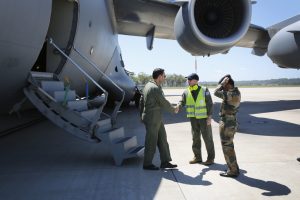
IL-76 and An-32 aircraft and Mi-17 helicopters are also being upgraded with better avionics and systems to enhance their performance. With the induction of Hawk-132 and Pilatus PC-7 Mk-II aircraft, the IAF trainer fleet is already a modern and capable fleet.
IS: What are the new technologies in terms of propulsion, speed, standoff attacks, intelligence missions, and electronics that you perceive will play decisive roles in future combats. And the role of EW systems specifically?
AR: We are at present on the threshold of absorbing Fifth generation technologies wherein sensor fusion, net centricity, long range standoff weapons, smart engines, stealth/ low observable technologies etc. will be the basic tenant of any future airborne platform. Ground based sensors and weapons will also see a quantum jump in sensor technology, ranges, lethality and redundancy.
EW systems play an important role and will continue to do so in the future also. In the modern battlefield, no weapon system can survive or perform optimally without a comprehensive EW suite, whether it is carrying out offensive or defensive operations. It is a Force Enhancer in the true sense.
IS: Growth of IAF’s AWACS/AEW capability?
AR: AF has already inducted IL-76 based AWACS aircraft. Presently, AEW&C aircraft based on Embraer platform are under development by CABS and are likely to be inducted shortly. Additionally, AWACS are being acquired through the indigenous route with DRDO. AWACS (India) project is at the proposal stage.
The gap between the inductions of the CABS developed AEW&C and AWACS (India) has necessitated acquisition of additional AWACS aircraft to meet operational requirements. These will be IL-76 based AWACS and are being procured under the repeat purchase clause of the present AWACS contract.
IS: As the number of combat jet requirement is large, larger than what it was 10 years ago, foreign manufacturers, Boeing, Lockheed Martin and Saab Gripen have offered Make in India projects. They have made presentations to the Government, IAF and Media.
Has a selection process begun?
This also raises another question on the choice of single or twin-engine machines. Your observations on the possible IAF preference please. We take it that whatever IAF buys, will conform to the MMRCA standards, and plus, laid down in 2007 RFP. Technology should have changed since this due to onboard force multipliers. If one is late, then taking advantage of the late start is the logical choice in picking up the latest?
AR: Government is preparing the roadmap for induction of fighter aircraft in the IAF in order to attain the sanctioned strength at the earliest.
Various options are being considered for induction through the ‘Make in India’ route. Suitable aircraft will be selected based on certain guiding principles that will govern manufacturing of these aircraft in the country and meet IAF’s operational requirements.
Combat aircraft procurements will be distributed over the entire spectrum of heavy, medium and light weight categories, as well as weaponry for various air campaigns and twin/single engine configurations.
IS: IAF’s decision to acquire Airbus A330 MRTT has been reversed. That should affect your plans. Is IAF looking afresh at newer systems, now that Boeing has also put its latest tankers in the market?
What are the options now?
We have been told earlier that IAF plans for 100 per cent midair refueling capability?
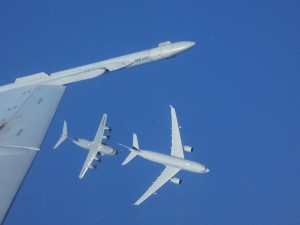
A400M being refueled by A330MRTT tanker, July 2014. Wing of F-18 chase plane in foreground.Credit Airbus Military
AR: The IAF has been pursuing the case for acquisition of additional Flight Refueler Aircraft. This case is being progressed based on Total Cost of Acquisition model, which considers the Life Cycle Costs. Various options are being considered to ensure that the Flight Refueling Aircraft are acquired at the earliest with emphasis on meeting our operational requirements.
IS: Helicopters: IAF is acquiring Chinook and Apache helicopters from the US, as also Mi-17s from Russia. There are still some more requirements, like larger numbers of these choppers, utility helicopters and VVIP requirements. Your comments please?
AR: A case is under progress for procurement of 200 Kamov 226 T helicopters from Russia under an Inter-Governmental Agreement. Out of 200 helicopters, 140 would be coproduced by a Joint Venture between the Russian companies and HAL. 65out of the 200 helicopters will be inducted in the IAF.
Subsequently, based on the success of 2-3 Ton class indigenous LUH being designed and developed by HAL, balance requirement of helicopters in the Light Utility category will be progressed. Both these helicopters are planned to replace Cheetah and Chetak fleets of the IAF. At present, Mi-17 V5 helicopters are being utilized to meet VVIP requirements.
IS: MAFI: This project has been there for some time. Your comments on progress please?
AR: Phase-I of Modernization of Airfield Infrastructure Project, which covers a majority of IAF’s airfields, has made good progress and will be completed shortly. Thereafter, the remaining airfields would be taken up for modernization. The infrastructure at the airfields has seen an extensive upgrade as part of the project and this project has greatly enhanced IAF’s operational capability.
IS: Make in India, Offsets and Technology Transfer: These are imperative parameters now in acquisition and modernization. You comments on how IAF is implementing these elements?
AR: In an effort to strengthen the indigenous defense production base, the Government has put in place a Defence Production Policy, which endeavors to enhance the defense R & D base of the country. The DPP-2016 includes several initiatives to encourage local R & D and increase in indigenous content in defense procurement.
The ‘Make’ procedure of DPP-2016 seeks to address the multiple objectives of self-reliance, wider participation of Indian industry, impetus to MSME sector, sound implementation, transparent execution and timely induction of equipment into the Indian Armed Forces.
IAF has always encouraged development of indigenous defense production capability and capacities. IAF firmly believes that indigenization provides flexibility by reducing dependence on external agencies and leads to economic growth of the nation and it is the only way to have true strategic autonomy.
The IAF has been at the forefront in inducting indigenously manufactured weapon platforms and systems.
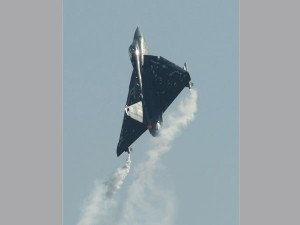
The formation of the first LCA squadron in Bangalore and the substantial order for LCA aircraft are testimony to the importance that the IAF places on self-reliance. A number of indigenously developed and manufactured aircraft, helicopters, radars, missiles and electronic equipment have been inducted or are in the process of being inducted. Projects like AEW&C, AWACS (India), IACCS, Akash SAGW & Astra Missile are being fully supported by the IAF.
IAF has recently conducted a number of seminars to foster greater interaction with the defense industry. To have greater clarity in the industry so that it can map its capabilities and potential with the requirements of the IAF, the ‘Indigenisation Roadmap Indian Air Force (2015-2025)’ was released by the IAF in April this year.
Another seminar was conducted in Lucknow in September 2016 to encourage participation by MSMEs.
IS: IAF needs to be commended for the extraordinary HADR operations undertaken by it. However, are there are any lessons to be drawn from these? In the same context and to further build on its strategic/tactical airlift capabilities, is the IAF thinking of acquiring more aircraft like the C-130J?
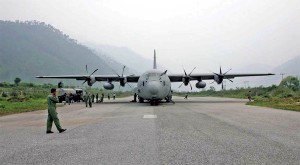
Several IAF officers seem to favor deployment of this aircraft even for ferry flights to A&N and other islands, particularly after the recent loss of an An-32?AR: IAF has indeed performed commendably in all HADR related missions not only within the country, but abroad also. Lessons drawn during various HADR operations are constantly reviewed.
Also, HADR Table Top exercises are being planned every year by the three Services for better integration of NDMA, Civic functionaries and the Armed Forces at the field level. IAF is acquiring additional C-130J aircraft. However, C-130J is a Special Operations aircraft with heavy operational and training task; it therefore may not be available for routine airlift or courier operations.
IS: Could you give an update on the LCA Mk I/Mk II program? Will Tejas be able to come up to IAF’s expectations? HAL Chairman has told us that new version will have an AESA radar and some key electronic systems in accordance with IAF requirements?
AR: The first squadron of LCA was formed on July 1, 2016. This is a significant step towards indigenous capability building. However, it will still take some more time before these aircraft are operationalized in IAF with their full capabilities.
IAF will be carrying out extensive flying on these aircraft in order to exploit their entire envelop for optimizing their roles and tasks. I am confident that the LCA Mk 1A which would have enhanced capabilities, would be able to meet the requirements of the IAF.
http://www.indiastrategic.in/2016/10/21/interview-chief-of-the-air-staff/

